CNES’ Director of launcher, Jean-Marc Astorg, has given an update on the French Space Agency’s roadmap on future launchers. Compared to previous iterations of this roadmap, it now has more details on how to reach its ambitious goal: halving launch costs compared to Ariane 6 by 2030.
To do so, CNES has adopted a design-to-cost approach, inspired by SpaceX. It also has embraced first-stage reusability, and consequently it ended up with a concept very similar to Falcon 9:

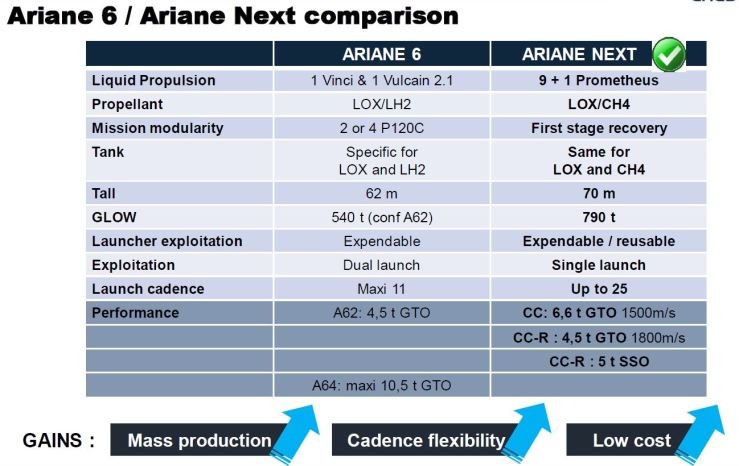
This Ariane 7 concept ditches most of the heritage from Ariane 5 and 6: the solid boosters, the Vulcain first stage hydrolox engine and the Vinci upper stage hydrolox engine. Has such, it will probably be a very tough sell to other ESA member states, such as Germany and Italy. Indeed, Italy co-manufactures the P120 boosters for Ariane 6. Besides, these boosters are also the first stage of the Italian Vega C light launcher, so giving up the commonality with Ariane will increase the cost of this launcher, potentially driving it out of the market. Things will be even worse for Vega if Ariane 7 reaches its price point of around 37 million €, as then it would undercut a Vega which has a price target of 35 million € taking into account the shared costs of the P120C:
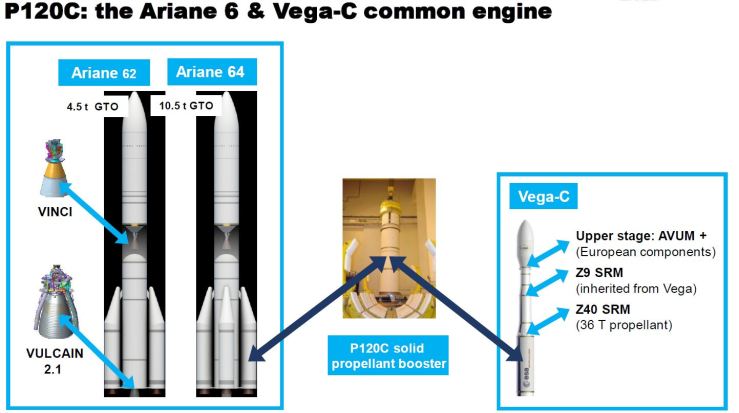
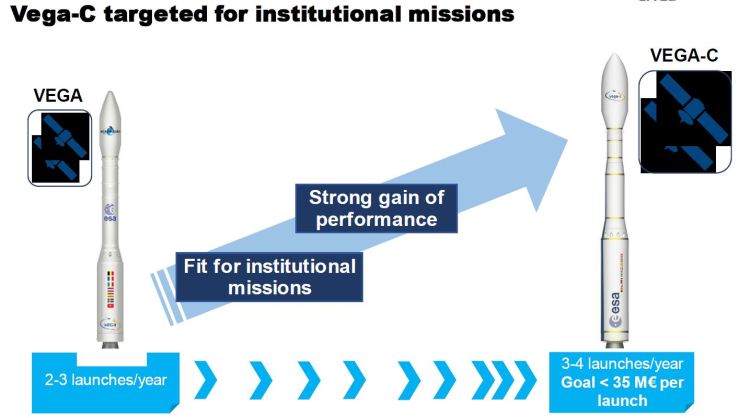
Even in France, strong opposition could be expected: the main manufacturers of Ariane 5, Airbus Group and Safran, which produces the Vulcain engines, managed to kill CNES’ concept for Ariane 6 because it would have reduced their profits too much. CNES’ concept was called PPH, and use a stack of P120 solid boosters as first and second stages, with only the upper stage using an hydrolox engine. Safran and Airbus, helped by a public letter from satellite operators which worried about the vibrations and potential damage to the payloads induced by a mostly propulsion, managed to convince the French government and its ESA partners to choose a solution with much more heritage from Ariane 6, and to give industry a lot more design authority. The same thing could happen to CNES’ Ariane 7 if the industrialists do not find it in their interest. The fact that Ariane 7’s proposed engine, Prometheus, is being developed by those same industrialists and in collaboration with the the German space agency DLR protects it a lot from such attempts.

However, other institutions could object, for instance the French Ministry of the Armed Forces, which watches over the production of large solid engines very closely. The reason behind this is that they are also used for the submarine-launched ballistic missiles equipping the French nuclear deterrent. In fact, the importance of large solids for military use was partially besides the PPH concept, as it ensured military industrial base was supported by civilian application. Having to give that up will be very challenging for the supply chain of those missiles, as there is almost 30 years between each generation of ballistic missiles, so the skills to design and build large first-stage solids might die out.

If such odds can be overcome, Ariane 7 will live or die by the success of the Prometheus program. Probably the most innovative engine to be developed in Europe since the Vulcain, which started development in 1988, Prometheus combines the use of a new propellant, methane, with the flexibility and cost reduction brought by additive manufacturing:

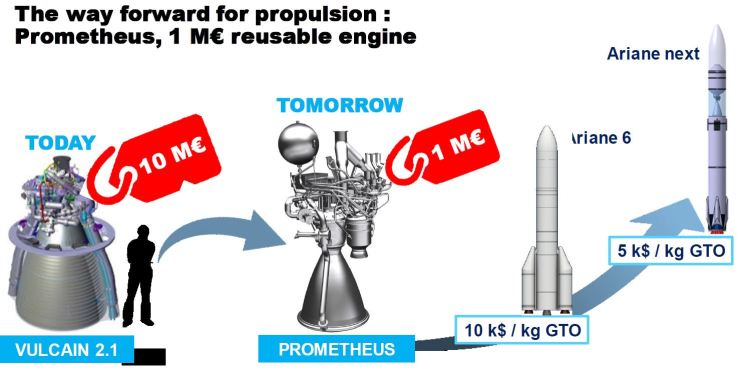
The fact that liquid methane and liquid oxygen are a similar temperature also means similar fuel tanks can be used. This also represents a significant cost saving over using liquid oxygen and liquid hydrogen, has hydrogen is significantly colder and requires a special tank design to keep it that way. It is also much less dense than oxygen, requiring much larger tanks:
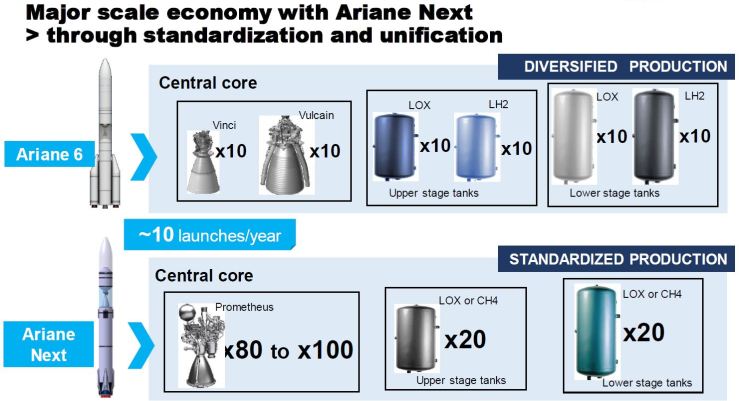
Another important point in CNES’ approach to Ariane 7 is the learn-as-you fly philosophy: instead of designing it from scratch, the concept will be proven through the small-scale reusability demonstrator Callisto and the full-size Themis first stage demonstrator:
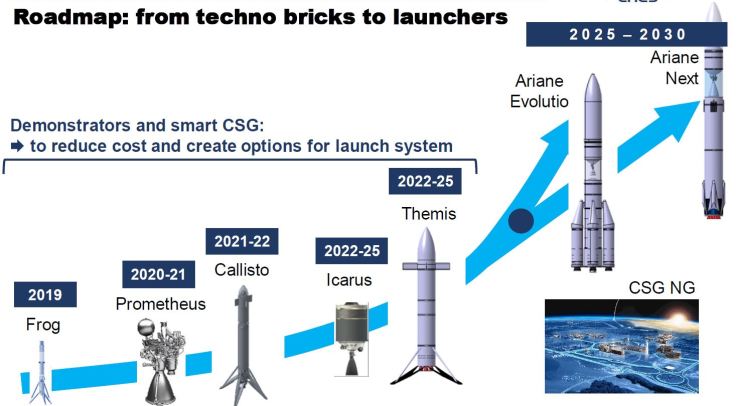
Overall, this Ariane 7 combines the most successful elements already proven by SpaceX: using the same engine for the first and second stages, reusing the first stage by landing it propulsively at the launch site or at sea, and using methane as a high-performance propellant. Should it be funded at an ESA ministerial conference in the near future, it should provide Europe an independent access to space and a shot at the very competitive launch market of the 2030s. The only regret might be that if Prometheus had received more funding earlier, it might have been ready in 2015, and could have been chosen for Ariane 6. This would have accelerated the timetable by ten years. Delaying Ariane 6 by a couple of years could have achieved the same, as its first flight is scheduled in 2020, the same year as the first Prometheus test fire.


Rather than Ariane 7, I think a much more appropriate name would be Ariane 9, for obvious reasons. 🙂
LikeLiked by 1 person
[…] CNES’ future launcher roadmap analyzed – SatelliteObservation.net […]
LikeLike